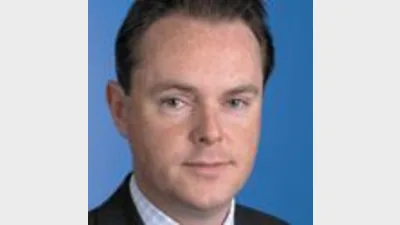Hanging onto the great Australian dream



Peter McGuinness
It is well known that the financial planning environment is changing rapidly with the exodus of the baby boomer population from the workforce to retirement.
Much has been written about the demographic changes, but we feel the real challenge will be how to handle this segment of the population that has enjoyed a long, stable economic period of generally higher standards of living.
The fact is that many in this group may be unable to maintain their lifestyle in retirement because of insufficient financial assets that will be needed to support them over the next 20 or 30 years.
When you further consider that around 25 per cent of boomers will carry debt of some form into retirement, the problem is an even bigger concern.
Financial planners will need to rethink how best to achieve their expectations.
Traditional financial planning strategies probably won’t provide a complete solution to their problem. The good news is that there are innovative solutions already available.
Until recently, the family home has been treated by planners as an illiquid and inflexible asset.
Over the past four years a new class of financial product, in an equity release product, has paved the way for a range of revolutionary financial planning solutions.
There is logic behind this because the majority of Australians are homeowners, and this asset class represents a major portion of their total wealth.
For instance, the over-60 age group currently owns over $600 billion in real estate value.
An equity release product (and the best known of these are reverse mortgages) simply allows homeowners who are 60 or older to access or liquidate a portion of their homes without the need to make any regular repayments.
The funds can be taken as a lump sum, regular income, a combination of both or set aside in a reserve account for future use.
It is this flexibility that allows planners to integrate the reverse mortgage product into a range of tailored financial solutions for clients.
Exempt asset
Furthermore, the principal residence is an exempt Centrelink/DVA asset (as well as income exempt), and this is where the real power of reverse mortgages lie.
The reverse mortgage provides a very unique and universal range of solutions that integrates well with other financial products.
For example, in couple relationships where there is a reliance on Centrelink/DVA benefits, we know that upon death the income paid will reduce for the remaining spouse. There is most often a period of bereavement that makes reassessing and advising more difficult.
The reverse mortgage will ‘buy time’, since any Centrelink/DVA income shortfall can be easily and conveniently paid during this period.
Safety net
Demonstrating the invaluable safety net features that a reverse mortgage provides will be well received at the time a planner implements a retirement strategy. It becomes an integral part of the financial strategy from day one and will have greater meaning and acceptance than tacking on this product as a means of last resort or as an afterthought.
A major strength of reverse mortgages is the flexible income payments, which are not assessed as an asset or income by Centrelink/DVA. When combined with other income stream investments, reverse mortgages can allow for larger Centrelink/DVA benefit payments, especially if clients fall under the income test.
Retirees have enjoyed an unusual period of double digit investment returns since 2003. Somewhere in the future the financial markets will deliver lower or even negative returns. Drawing income from investments in such markets conditions is quite distressing for retirees.
The reverse mortgage income strategy can provide a valuable top-up of income where a planner might recommend preservation of investment capital until markets settle.
The baby boomers can expect a longer period in retirement than previous generations.
Apart from their lifetime income needs, there are a host of other financial needs that will need to be addressed.
These can include travel, upgrades to homes or cars, medical costs or perhaps to assist family members.
Because of the unforeseen and irregular nature of these expenses, it can be difficult for financial planners to know what investment capital to allocate for these needs.
Servicing these capital needs by drawing from income stream products can impact future income payments and longer term retention of capital.
Clearly the latter isn’t the best solution. This ‘rainy day money’ is ideally provided by a reverse mortgage because it is available when needed.
Many reverse mortgage products allow the option to include a pre-approved reserve account facility to specifically provide the cash for those irregular and unforeseen expenses. This is a very appealing solution because interest isn’t charged until funds are drawn down and it allows invested funds to be retained.
Central to a financial plan could therefore be a single asset, able to respond to a range of flexible demands that could stress even the best thought-out financial plan. Consider the following scenarios.
Scenario 1
A client’s allocated pension investment returns start to diminish, but maximum drawings are still required to deliver the required income.
While investment returns have been strong and consistent over the past five years, equity returns could well come under pressure over the next five years.
Does the financial planner advise the client to chase higher risk investments, or supplement the income fund with additional cash flow drawn down under a reverse mortgage? Graphs 1 and 2 (Page 25 Money Management issue November 15th 2007) show how this might work.
Scenario 2
The client requires a significant one-off expenditure to purchase a new car and replace the kitchen in their home.
Without access to a capital reserve, planners may be faced with the option of dipping into the capital used to support the income plan.
Reverse mortgages are very well placed to provide access to capital for significant one-off expenses, and without the need to disrupt a well thought out investment plan.
Experience of reverse mortgages written over the past few years tell us that the purchase of a car and investment in home improvements are two of the most popular uses of reverse mortgage funds.
Scenario 3
The client is looking for access to an emergency reserve and living expenses.
A similar challenge to Scenario 2. If the client needs access to emergency funds or just general living expenses above and beyond the planned income stream, where does it come from? Reverse mortgages can now be implemented to provide standby facilities that clients can access as they need them.
Product evolution
When Bluestone first launched its products in 2004, there was a genuine belief that financial planners would be positive adopters of the concept; any financial solution that delivered more options for clients in retirement, without the investment risk associated with many alternative solutions, must surely be a step forward for the retirement planning industry.
It is really only in the past 12 months that we have started to see a strong interest in using reverse mortgages as a core element of retirement discussions.
The recent Trowbridge Deloittes/Sequal industry survey indicated that 9 per cent of reverse mortgages written in the 12 months to June 30, 2007, were introduced by financial planners. Several factors have contributed to these increasing confidence levels.
1. More flexible product design
If planners consider the equity in the home as a financial asset, the next question they are likely to ask is on what basis can my client draw down this equity?
Unlike previous generations of reverse mortgages, planners have considerable flexibility; lump sums, monthly instalments and standby cash reserve facilities are all available, and in any combination.
In addition, they can now take advantage of long-term interest rate protection with fixed for life and capped for life options.
The monthly instalment option is popular with planners because it delivers a cash flow that mimics an annuity income or allocated pension drawdown, but is in fact a return of capital from a Centrelink exempt asset.
Products have already evolved to specifically assist with the funding of accommodation bonds, and this area is set to become a popular niche with aged care specialists.
2. Research
Historically, third party research on reverse mortgages has been lacking, leaving many dealer groups having to perform their own research.
Recently however, ratings services such as Cannex have performed detailed research and ratings on the wide range of available reverse mortgages. Cannex’s October 2007 report indicated that there were over 55 different reverse mortgage products in Australia.
3. Heightened consumer awareness
A combination of positive media coverage, lender education programs and greater product penetration has led to a more informed consumer base.
The concept of a reverse mortgage is less likely to be an unknown to many clients.
In Bluestone’s experience with financial planners, one of the most engaging ways to discuss reverse mortgages is via information sessions or seminars at which planners, often supported by FIS officers or solicitors, explore options for using the home in retirement.
4. Sequal: Industry self-regulation and education
One of the most important developments in the industry for planners is the strength of Sequal in guiding the product providers to ensure the highest levels of consumer protections are maintained.
Initiatives such as mandatory strengthening of no negative equity guarantees are being actively implemented. Sequal has also published an industry standard for the accreditation of equity release professionals, whether they are a financial planner, accountant or mortgage broker.
Reverse mortgages are empowering, not a retrograde step.
The key to understanding how reverse mortgage products can benefit financial planning clients is to first see them as a solution or tool to resolving client needs; not as an after thought or last resort strategy.
They are not products restricted to people with no assets apart from their homes, far from it. When integrated as part of a total financial solution, clients will be far more accepting of these products.
When the family home is seen like any other financial asset, it opens tremendous planning opportunities. After all, the home has delivered asset returns over the past 10 years in excess of 10 per cent per annum, and has been a significant wealth creator.
A successful equity release financial planner once explained to their client that they should think of their home in two parts: the home they purchased 20 years ago (together with growth from inflation) and the value of their property derived from the real investment return over the same period.
The real return component was in effect a form of retirement savings that should be considered in the same light as the returns in their superannuation fund, and drawn down in the same way as an allocated pension.
The family home holds a very unique position compared to any other financial product because it not only provides protection, comfort and shelter but also offers true long-term financial security.
Peter McGuinness is the chief executive of Bluestone Equity Release and Rob Budreika is the founder of Seniors Monetary Solutions.
Recommended for you
Next year will see AMP roll out an end-to-end solution for its North platform, marking a shift in the firm’s position within the advice technology sector and building on adviser feedback.
My Dealer Services is predicting strong growth in self-licensing next year, citing recent ASIC action against Interprac and the desire for independence as key drivers of the self-licensing trend.
ASIC has handed down a six-month AFSL suspension to MW Planning after the firm failed to replace its banned responsible manager.
Despite the year almost at an end, advisers have been considerably active in licensee switching this week while the profession has reported a slight uptick in numbers.










